Mount Fuji, Japan’s iconic symbol, continues to captivate visitors with its stunning beauty and rich cultural significance. While the recent viral sensation of a Lawson convenience store offering an Instagram-worthy view of the mountain has drawn international attention, there are countless other incredible places to experience the majesty of Mount Fuji. Let’s explore 8 attractions you can visit to indulge in the breathtaking beauty of Mount Fuji and its surrounding areas!
1. Kawaguchiko Lake
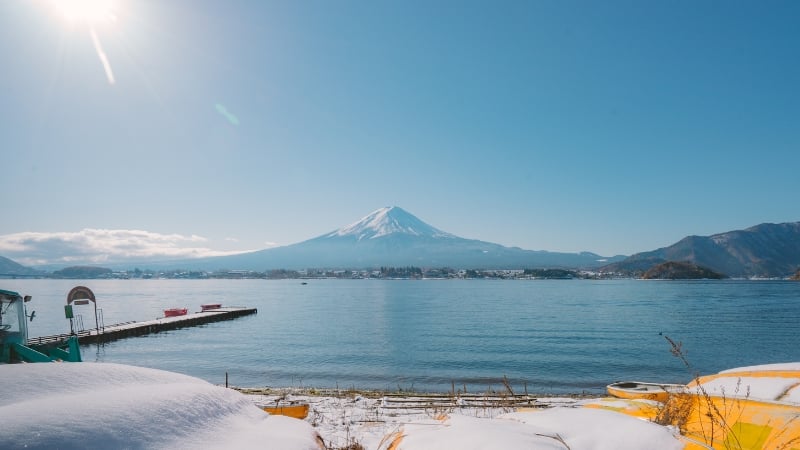
Image credit: Photo3idea via Canva Pro
Kawaguchiko Lake is the second largest of the Fuji Five Lakes that lie at the foot of Mount Fuji. As I observed locals engaged in leisurely fishing by the lake, I felt a sense of tranquility away from the bustling city. When we get caught up in the fast-paced lifestyle, we often forget to slow down and appreciate the simple pleasures. This serene setting reminded me of the importance of taking time to relax and recharge.
Recommendation: Must-visit! It is the perfect spot for you to enjoy a scenic view with a cup of hot chocolate in hand to keep yourself warm while you’re in deep thoughts and reflecting on life. There are also a lot of cafes and souvenir shops that are within walking distance. And if you get bored staring at the lake, there are plenty of hills and hiking trails around to explore! You don’t have to worry about accessibility as there are many public buses that come here from Kawaguchiko Station!
Also read: Exploring Japan: 9 Easy Day Trips from Tokyo
2. Houtou Fudou

Image credit: Gyro via Canva Pro
This restaurant has been featured in numerous Japanese travel programmes and is, in fact, the hotspot if you travel to Kawaguchiko, especially since it’s located right opposite Kawaguchiko Station.
Hoto noodles is a famous local dish in Yamanashi Prefecture and is a must-try while you’re there! It is made up of udon, mushroom, tofu, pumpkin, white cabbage and carrot in a big hot pot of steamy soup. Here, the traditional Japanese ambience creates a warm and inviting atmosphere.
Recommendation: If you’re a foodie then you definitely have to give these noodles a try! It’s a change of taste compared to the usual Japanese dishes.
3. Fujiyoshida Sengen Shrine
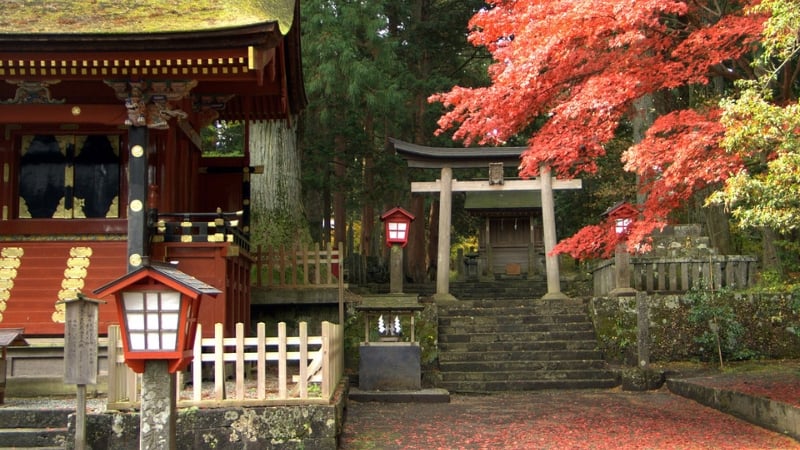
Image credit: Neworion via Wikimedia Commons
Fujiyoshida Sengen Shrine is formally known as Kitaguchi Hongū Fuji Sengen Jinja, which means ‘North Entrance Fuji Sengen Shrine’ in English. Just to share a little bit about the history of religion in Japan: In ancient times, it was believed that this shrine served as a sacred gateway to another world, and people climbed Mount Fuji to worship the divine.
Recommendation: Must-visit if you’re a cultural enthusiast! I promise you will appreciate the nostalgic architecture and history behind it. If you intend to get here by public transport, I’m happy to report that it’s just a 15-minute bus ride from Kawaguchiko Station!
4. Fuji 5th Station

Image credit: Jakub Halun via Wikimedia Commons
Hands down, my favourite tourist attraction when visiting Mount Fuji as you’re able to get a spectacular view of the mountain from here. The best part is you don’t have to climb to enjoy the view!
Fun fact: At 2,300m above sea level, 5th Station is one of the four trails you can take to get to the summit of Mount Fuji.
Recommendation: If you like being up in the mountains and close to the clouds, then 5th Station is the place to go! The bonus is that you get to capture the picturesque view of Mount Fuji, which is so Instagram-worthy! It can get chilly, but there are many cafes for you to take refuge in to keep yourself warm. And the fact that the location is easily accessible is the icing on the cake! There are buses you can take from Kawaguchiko Station that stop right at 5th Station.
5. Aokigahara Forest
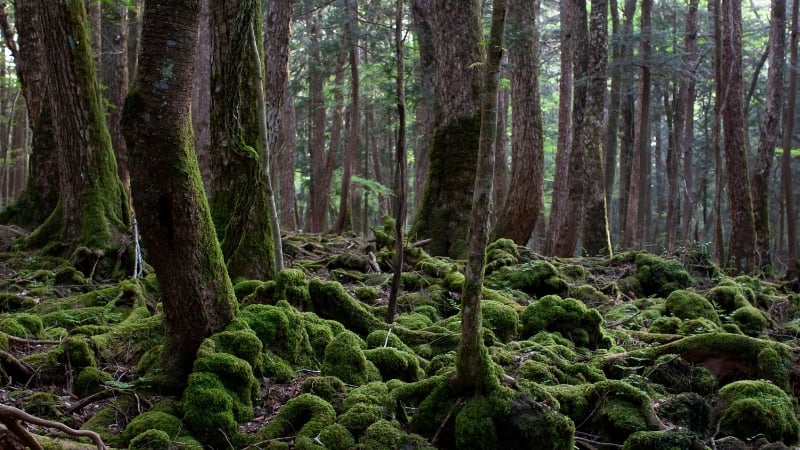
Image credit: Toshiharu Arakawa via Getty Images
Aokigahara Forest is also known as ‘suicide forest’, and I’m sure most of you have heard the haunted stories about this place. There was a movie – The Forest – produced about it too but fret not as it is only a work of fiction! If you ask me, a myth will remain as a myth until you experience it yourself. Hence, there’s no reason to let these stories deter you from exploring this fascinating place if you’re an adventure seeker.
Recommendation: Not recommended for the faint-hearted, the trek requires a good level of physical fitness and can be quite challenging, but the reward of a memorable experience is worth the effort. Unfortunately, the forest is not easily accessible by public transport, so it’s best to drive or join a guided tour.
6. Shiraito Falls
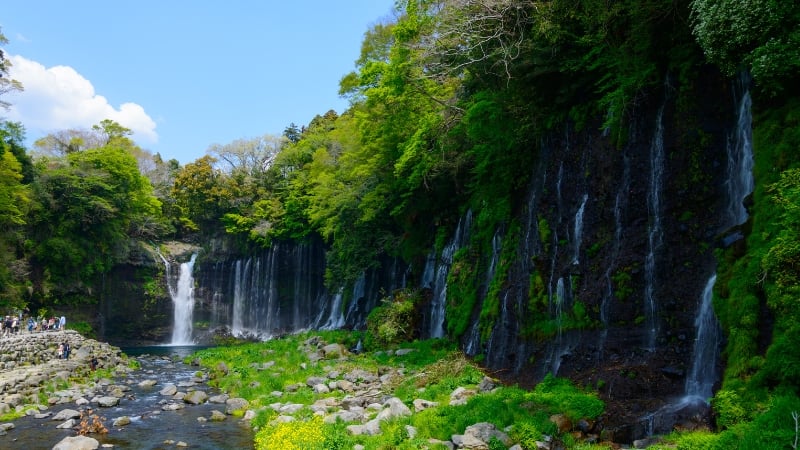
Image credit: Hiro1775 via Getty Images
It is located in the southwestern foothills of Mount Fuji and is otherwise known as Shiraito-no-taki, which literally means ‘white thread waterfalls’ as the water cascades down the mountainside like a delicate white thread. I couldn’t believe my eyes when I got there – I was absolutely captivated by the cascading waterfalls surrounded by lush greenery, a sight I don’t often see. Nature is beautiful indeed.
Fun fact: It is ranked among Japan’s greatest 100 waterfalls to visit!
Recommendation: It is not easy to get here by public transport so again, it’s best if you drive! Personally, this place is not a ‘must-visit’ for me because other than viewing the waterfall, there was nothing much to do in the area.
7. Lake Motosuko

Image credit: Idmanjoe via Getty Images
Lake Motosuko is one of the five stunning Fuji Five Lakes, nestled at the foot of Mount Fuji. Known for its crystal-clear waters and breathtaking views, it’s a popular spot for outdoor enthusiasts and nature lovers. This lake is 138 metres deep and the deepest of the Fuji Five Lakes.
Fun fact: The view is famous – it is printed on the back of a ¥1000 bill.
Recommendation: Just like the previous tourist attractions, the view is phenomenal! However, reaching this spot can be inconvenient due to limited public transportation options. There’s only one bus route from Kawaguchiko Station, and the journey takes about 30-45 minutes each way. While it might not be a must-visit for everyone, especially those with limited time, the stunning view is definitely worth the effort for those who can make it.
8. Oishi Park
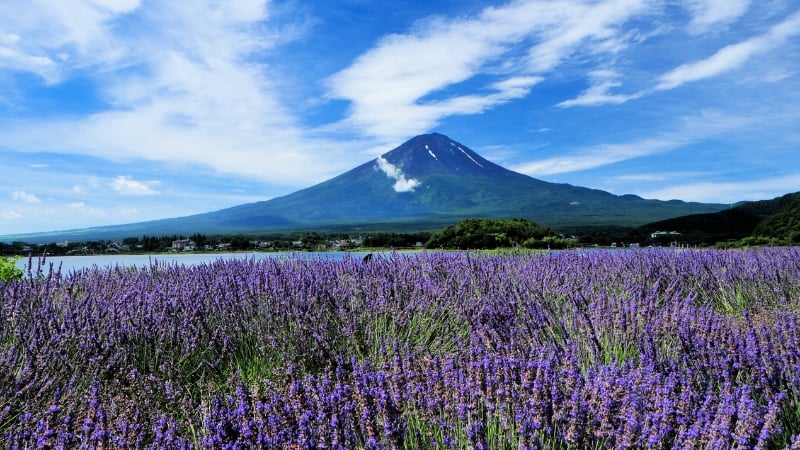
Image credit: Goryu via Getty Images
Oishi Park is a hidden gem nestled along the shores of Lake Kawaguchiko. It’s a tranquil retreat where you can escape the crowds and immerse yourself in nature’s beauty. With its lush greenery, serene lake views, and charming walking paths, Oishi Park offers a peaceful escape.
Recommendation: It’s a fantastic spot for photographers to capture stunning shots of Mount Fuji reflected on the lake’s surface!
Also read: 8 Places for Great Views of Mount Fuji
These are the 8 places I visited around Mount Fuji and I enjoyed every moment I was there! Before I end my post, here are two major tips from me:
- Book a Guided Tour: To explore the area around Mount Fuji with ease, consider booking a guided tour. This option offers the convenience of pre-planned itineraries, reliable transportation, and knowledgeable tour guides who can provide valuable insights into the region’s history and culture.
- Budget-Friendly Tour Options: If you’re on a budget, there are several budget-friendly tour options available. These tours often include transportation, accommodation, and some meals, making them a cost-effective way to explore the area.
I hope this post inspired you to visit Mount Fuji or help you with your itinerary if you’re in the midst of planning. Should you decide to visit but don’t know where to start your research or how to get to Mount Fuji, you can read my previous article on how to go to Mount Fuji from Tokyo.
Contributed by Count The Love







